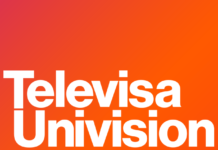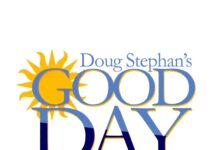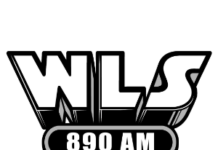
(By Robert Lee) I just finished reading the weekly e-newsletter from DABWorld, the international, nongovernmental organization that sets the technical standards and advocates for government adoption and implementation of terrestrial DAB+ digital radio. DAB+ is one of the three principal global digital radio standards, along with Digital Radio Mondial (DRM) and In-Band/On-Channel (IBOC), the latter known commercially as HD Radio. DAB+ has emerged as the leading digital, terrestrial radio standard in Europe and other countries. As I read the DABWorld and other industry email newsletters and publications each week, I am always staggered at how much further along other governments and the proponents of DAB+ and DRM are in their digital broadcast radio development, as compared to the U.S. and the Federal Communications Commission.
Here in the States, I believe our FCC and other executive branch and Congressional leaders
merely think in terms, over and over again, of the “lowest common denominator”; in other
words, the easiest way out, not thinking in truly long-term and visionary-solution ways. For
example, while the FCC and the Congress years ago mandated the conversion of the NTSC
analog broadcast television system to ATSC digital, our terrestrial radio stations are still
relegated to muddling along in a “market-based” analog and digital hybrid compromise, with broadcasters mandated to utilizing the privately controlled IBOC/HD Radio standard, which radio station owner/operators are required to pay annual rights fees to use. Even worse, HD Radio, for technical and engineering reasons, only works well with FM radio, and not AM. On the AM side of things, HD Radio causes hugely intolerable interference problems between and among first-adjacent stations, even when the AM facilities are hundreds of miles apart. And then, with AM radio here in the U.S., what is the FCC’s “solution” to ostensibly help these analog stations overcome or survive the massive “noise floor” interference that daily degrades these medium-wave stations? They are permitted (literally) to supplement their ruined signals with analog, 250-watt FM translators, which, due to the low power of the latter, mostly do not provide the same coverage as the AM parent signal! In turn, the addition of thousands of cross-service translators for struggling AM stations just clogs the 88 to 108 MHz FM band to its own detriment, because that FM spectrum is already jammed to near-capacity with tens of thousands of full-power and low-power stations.
And, finally, the FCC’s latest idea for “revitalizing” AM radio is to allow voluntary, market based (again!) adoption of the MA3 digital standard — something that no other government regulator in any country, anywhere else in the world, uses. In other words, yet another mish-mash, “do it at your own risk,” hoped-for “solution.” Does this, along with all kinds of other problems and challenges faced by radio broadcasters, represent rational and productive public policy? I think not.
So, where do I think we need to go from here? Generally, without getting too political, I am a small- and limited-government conservative who supports a mostly hands-off or light regulation of the private sector. However, I believe that broadcasting is different. Because of the limited spectrum that is available for broadcast television and radio, I willingly accept that there needs to be a minimally robust amount of regulation of the use of the airwaves. We cannot have the “anything goes,” disorderly chaos that ensued in the very earliest days of radio broadcasting. Additionally, because of this scarce spectrum, I further accept the need to adopt a single standard that applies to all broadcasters, television and radio. The FCC, to its credit, mandated one standard, ATSC, for digital broadcast television. Technical/engineering upgrades, including the latest standard, 3.0, must adhere to and remain within the ATSC framework. Broadcast radio, I believe, needs to follow the same mandatory regulatory process. What, then, do I propose?
First, we need to transition broadcast radio to all-digital transmission and discard the
compromise hybrid IBOC standard that we’ve had to settle for. As with digital television, we need to move the digital transition along by Congressional and FCC mandate. The market-based, voluntary adoption policy, I think, simply does not work in a limited-resource environment like broadcasting. The limitations and lack of acceptable results of a voluntary system have been proven time and time again. Remember, most infamously, the 1980s analog AM stereo debacle, where four or five competing, “leave it to the market” standards resulted in no real or broad adoption, at all, of AM stereo?
Second, in my examination of the three main broadcast radio standards – IBOC/HD Radio, DAB+ and DRM – I believe DRM is the best technical choice. Unlike the privately held HD Radio system presently used in this country, DRM is a fully digital, open-standard, royalty-free method that will easily integrate and work with our existing AM and FM broadcasting system. DAB+, in contrast, would require the use of a different part of the radio spectrum, which is now used extensively by the U.S. military. Unless forced to do so by Congressional action, our military is not going to agree to simply hand over the radio spectrum it controls. DRM, then, is the only logical, valid, and most-compatible choice.
Lastly, if the FCC does insist on making a typical, compromise decision on an all-digital
broadcast radio standard, it would still have to mandate that audio device manufacturers
include an integrated chip in traditional AM/FM radios and smartphones, at the consumer level, that would allow the devices to decode both an HD Radio or DRM terrestrial signal. However, such a compromise would still be an illogical, “bureaucratic” decision, given that most radio broadcasters and equipment makers presumably would not want to pay a royalty fee – or continue to pay the annual fee, in the case of broadcasters who are already using HD Radio technology – to Xperi, the licenser of the IBOC/HD Radio system intellectual property. Again, as an all-digital, open standard, “owned” or licensed by no one, DRM is the most rational way to go.
I would implore both Congress and the FCC to finally “get it right” in the transition to all-digital AM and FM broadcast radio. The two federal entities mandated the shift to digital broadcast television several years ago, along with the single standard that was required and is in use to this day. They need to do the same with broadcast radio. AM/FM radio in this country now stands out like a sore thumb, so to speak, being the last medium that is not yet fully digital. Once and for all, this far into the 21st century, let’s fix this public policy and market inconsistency in the most effective manner, by adopting DRM digital broadcasting.
Robert Lee is the owner of QXZ MediaWorks. Email him at [email protected].





